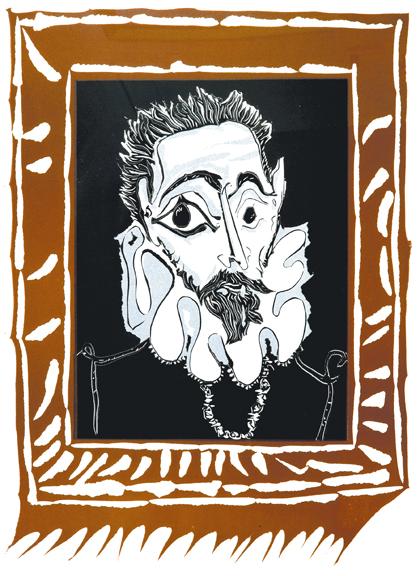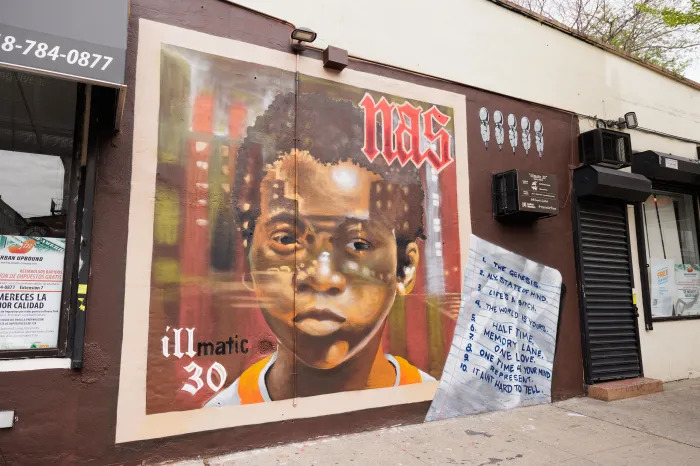By Alex Christodoulides
Sipping Spanish wines, the well-heeled crowd buzzed in multiple European languages about the Pablo Picasso prints on the walls. Many of the people had been imported from Manhattan by bus, brought out to view the newly opened exhibit.
Because the exhibit is in Queens, but not at a gallery space in Long Island City.
They were at Queensborough Community College.
The school scored a major coup in landing the exhibit of dozens of prints by the influential Spanish artist, a show that could easily have gone to the Metropolitan Museum of Art or a university art gallery in Manhattan instead of coming all the way out to Bayside. The show opened last Thursday with a gala attended by many influential art world figures.
The owners of the prints, Myra and Sanford Kirschenbaum, offered them to QCC to exhibit, setting off a flurry of excitement in the school community and drawing in President Eduardo Martì and Faustino Quintanilla, director of the art gallery and printmaking program.
“I think Sandy Kirschenbaum was the one who asked me if we'd be interested in showing paintings,” Martì said. “I don't know anything about art, so I asked Faustino to go look, and he came back saying, 'My God, you have to do this.' “
The exhibit has been some two years in the making and is a tribute to QCC's growing reputation — the art gallery on campus has previously hosted shows of 100 original pieces by painters Willem de Kooning, Jasper Johns, Mark Rothko and Roy Lichtenstein, as well as Andy Warhol prints, and of African art — according to Martì.
And now Picasso has taken up residence at the QCC art gallery, thanks to the Kirschenbaums and the team that brought the exhibit together.
“Because of the reputation of the college, they emptied their apartment and loaned it to QCC. Sandy said all that's left on their walls are little holes where the prints were,” Martì said. “He's been collecting his whole life.”
The whole concept behind the college's art gallery is to provide world-class exhibitions funded through private and public money that bring great art to the students and community of QCC, where they can learn from it, Martì said. The student body of 13,000, many of them immigrants learning to make their way in a new culture, can have a chance to be in contact with fine art, he said.
“It's my hope that students will come to the gallery, or that professors will recommend that they come,” Martì said. “They can use Picasso as a reference to understand the Spanish Civil War, to develop communication skills to describe what they see and feel looking at the prints, or go in and look at the African art and see that Picasso used a lot of elements of African art in his paintings and prints.”
The catalog of the exhibit is also the first offering of the QCC art gallery's academic press. Authored by exhibit curator Emmanuel Benador, a third-generation art dealer and the author of several books, including two on Picasso, the catalog is available for sale at the QCC art gallery.
The prints on the walls in the gallery document Picasso's growth as an artist and printmaker, encompassing a range of techniques from linoleum cuts — in which linoleum is fused to a block of wood, and the design is cut and gouged away to create a relief piece that is inked and used to transfer the image to another surface — to engraving, intaglio and etching.
“Femme Nue à la Source,” a depiction of a woman bathing, is on display along with the linoleum block so viewers can see how Picasso worked to make the image. There are sections gouged away, fine lines and broad strokes, showing the deliberateness of the process involved in creating the print.
Some of the other prints seem to have the precision of pen and ink drawings or the softness of pencil and watercolor. “Faune, Centaure et Homme aux Oreilles Pointues” is a 1961 piece produced using the techniques of aquatint, engraving, drypoint and scraper to create an image with the occasional softness of carefully smudged pencil lines.
Conversations murmured in French and Spanish between onlookers compared the Picasso prints to Henri Matisse's cut-paper collages. Art appreciators got right up to the prints to examine the fine lines that convey a doomed bull's sinewy strength as it rushes toward a toreador's sword, or the folds in a crone's robe as she delivers a pot of chocolate to a nude couple. They drank red and white Spanish wine from the region of La Mancha, birthplace of another famous Spanish figure, Don Quixote, and munched on fresh fruit until the announcement that the bus back to Manhattan was soon to depart.
The gallery space was renovated in recent years, creating an open, airy, spacious group of rooms with plenty of space for the prints. It also figures into another of Martì's long-term goals: to create a curatorial program at the school.
“This is more targeted, more precise — more elegant, if you will — and shows the sophistication of our curatorial ability,” Martì said.
The City University of New York's board of trustees recently approved QCC's plan to launch an associate's degree program in curatorial arts, and the school is waiting to hear whether the state Department of Education will endorse it, he said.
“Just think: We could have two-year students learn to curate, manage and mount an exhibit of this type,” Martì said.
In the meantime, Queensborough can rest assured that the New York art world has taken note of its gallery and ambition.
If You Go:
Picasso: Printmaker — A perpetual metamorphosis
When: Through July 27, 10 a.m. to 5 p.m. Tuesdays and Fridays, 10 a.m. to 7 p.m. Wednesdays and Thursdays, noon to 4 p.m. Saturdays and Sundays
Where: Queensborough Community College Art Gallery, 222-05 56th Ave., Bayside.
For More: 718-631-6396 or www.qccartgallery.org






























